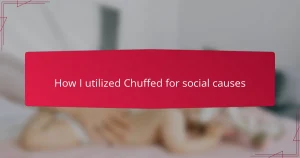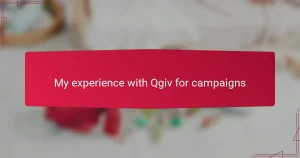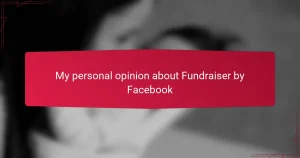Key takeaways
- San Diego family fundraising emphasizes personal connections and community involvement over impersonal, large-scale events.
- LocalGiving simplifies grassroots fundraising, prioritizing local causes and genuine community engagement.
- Effective campaigns leverage storytelling to create emotional connections and motivate participation.
- Sustaining community support involves regular appreciation, ongoing updates, and varied engagement methods to maintain enthusiasm.
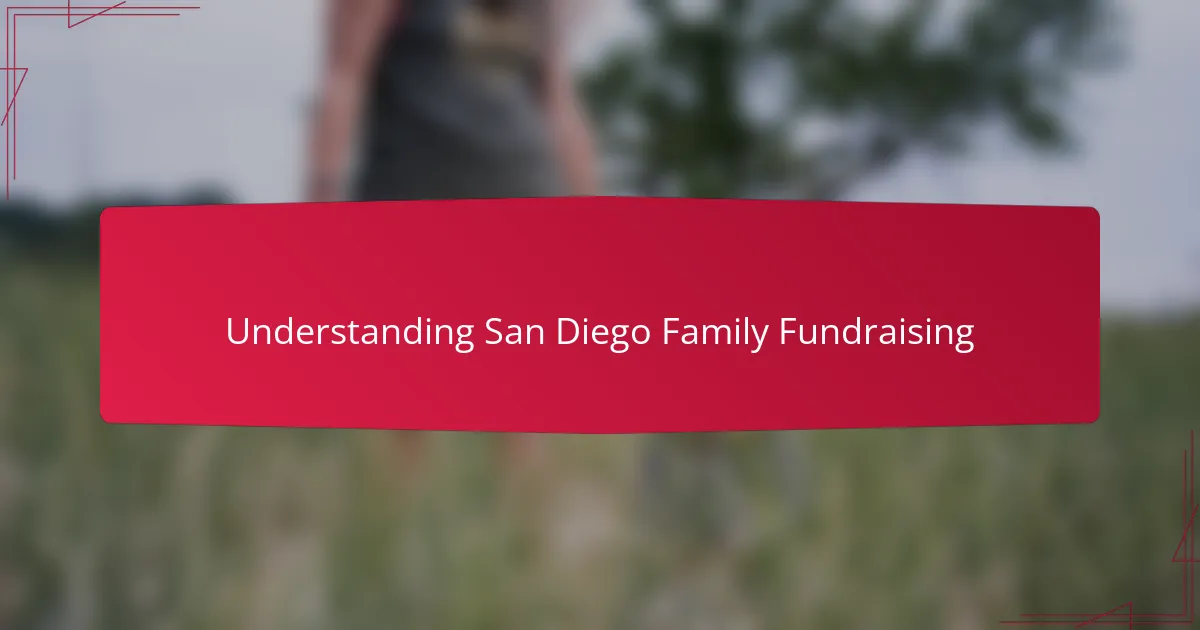
Understanding San Diego Family Fundraising
San Diego family fundraising is a unique blend of community spirit and creativity. From my experience, it’s about connecting with neighbors who genuinely want to support each other’s causes, making every effort feel personal and impactful. What stands out to me is how local culture and shared values influence the way families come together to raise funds.
| Traditional Fundraising | San Diego Family Fundraising |
|---|---|
| Often relies on large events and distant donors | Focuses on local community involvement and personal connections |
| Can feel impersonal or transactional | Feels genuine and driven by shared family and community goals |
| Long planning cycles and formal processes | Flexible, creative, and often spontaneous activities tailored to local preferences |

Introduction to LocalGiving Platform
LocalGiving is a fantastic platform that simplifies community fundraising by connecting local causes with supportive donors. When I first explored it, I was impressed by how easy it was to set up a campaign and reach neighbors who genuinely care. Its user-friendly interface made engaging our San Diego community feel less like a chore and more like a shared mission.
I found that LocalGiving stands out by focusing on smaller, grassroots efforts, making every donation feel personal and impactful. Comparing it to other fundraising tools, it’s clear LocalGiving prioritizes local connections over broad, impersonal outreach.
| Feature | LocalGiving | Other Platforms |
|---|---|---|
| Focus | Local, community-centered fundraising | Wide, often national/global campaigns |
| User Interface | Simple and accessible for all ages | Varies, sometimes complex for beginners |
| Community Engagement | Encourages personal connections and stories | Often more transactional and less personal |
| Fee Structure | Minimal fees favoring small fundraisers | Higher fees for processing and platform use |
| Support | Dedicated to helping local groups thrive | General support, less tailored to small groups |
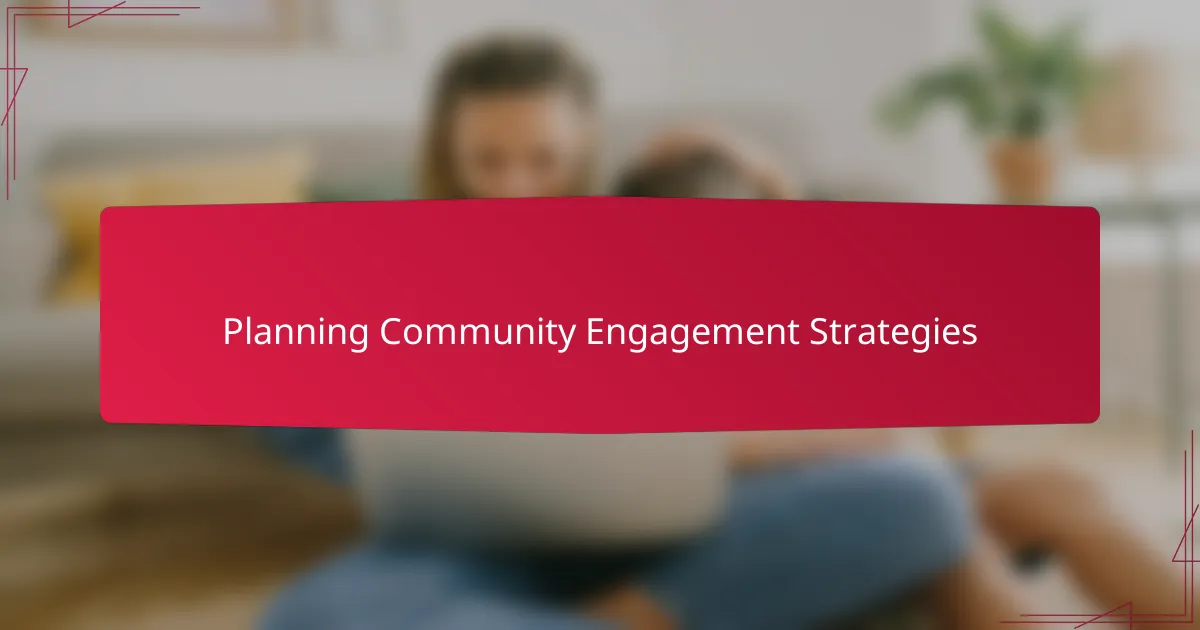
Planning Community Engagement Strategies
When I began planning community engagement strategies, I realized that understanding who would be involved was crucial. Asking myself, “What motivates my neighbors to participate?” helped me tailor approaches that felt authentic rather than forced. It’s amazing how knowing a bit about local interests can transform an outreach plan from bland to genuinely exciting.
One of the key steps I took was mapping out channels where we naturally connect—like community centers, local schools, and neighborhood social groups. I learned that engagement isn’t just about broadcasting messages but creating spaces for real conversations. This way, each interaction felt more like building trust than just asking for support.
Another insight that shaped my approach was setting clear, attainable goals but leaving room for creativity and spontaneity. I found that when people feel invited to add their own ideas, their investment in the cause deepens. Have you noticed how group ownership sparks enthusiasm? I certainly did, and it made all the difference in sustaining momentum throughout the campaign.
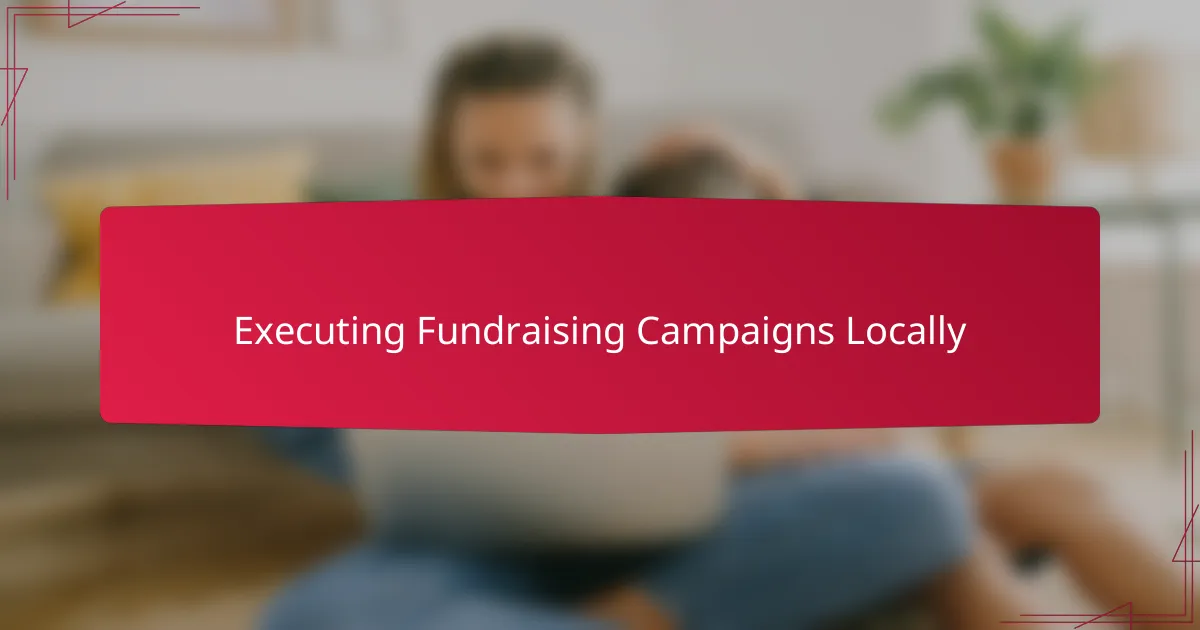
Executing Fundraising Campaigns Locally
Executing Fundraising Campaigns Locally requires a hands-on approach that taps directly into the community’s spirit. When I organized our last campaign through LocalGiving, I found that rallying neighbors around a shared cause not only boosted donations but also forged stronger personal connections. These moments of collective effort brought a genuine sense of accomplishment and unity that no online transaction alone could achieve.
One strategy I found incredibly effective was breaking down the campaign into manageable, localized events. This made it easier for people to participate and feel directly involved. Here are some practical steps I used to execute these campaigns successfully:
- Identify key community leaders and engage them as early advocates.
- Host small, neighborhood meetups to share the campaign’s goals and progress.
- Use storytelling to highlight specific local beneficiaries, making the cause relatable.
- Leverage LocalGiving’s platform to provide transparent updates on funds raised.
- Encourage friendly competitions between different community groups for extra motivation.
- Follow up personally with donors to express gratitude and build long-term relationships.
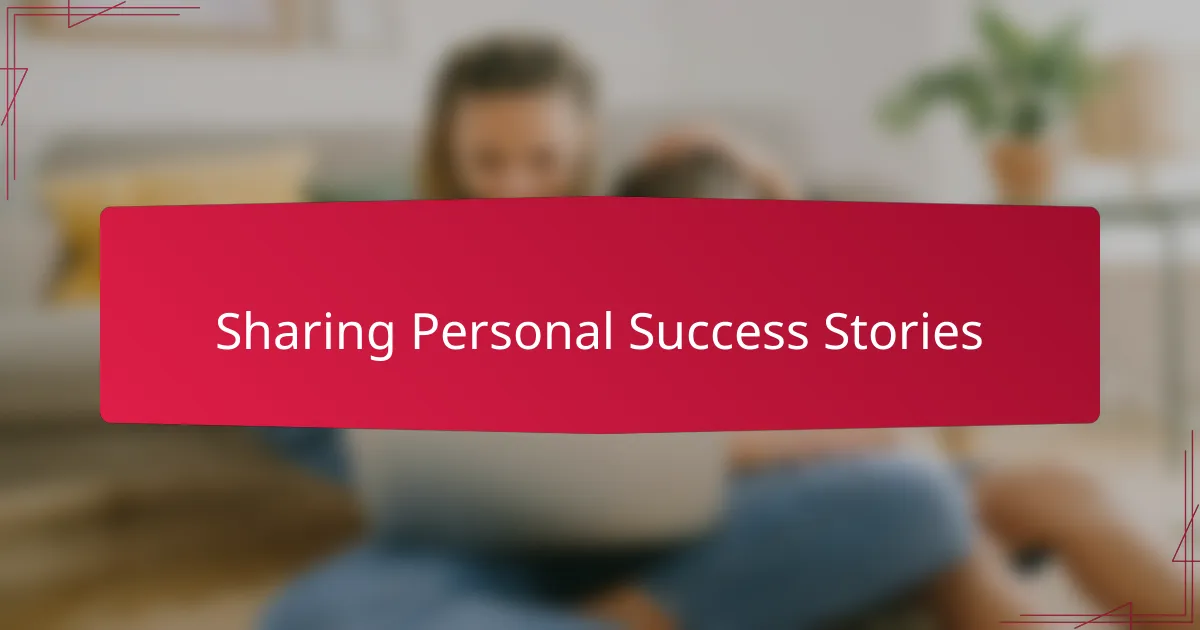
Sharing Personal Success Stories
Sharing personal success stories became one of my favorite ways to connect with the community through LocalGiving. I noticed that when I shared heartfelt stories about neighbors who benefited from the fundraising, people didn’t just donate—they felt part of something meaningful. Isn’t it remarkable how a simple story can turn strangers into passionate supporters overnight?
One moment that stuck with me was when a family who received help shared their journey during a local meet-up. Their gratitude wasn’t just in words—it was in the way neighbors nodded, visibly moved. That emotional connection made the cause tangible and encouraged even more heartfelt contributions. I realized then that success stories aren’t just updates, they’re powerful invitations to join a shared mission.
Have you ever wondered why some campaigns gain momentum so effortlessly? In my experience, it’s because stories create trust and transparency. When I made it a point to highlight real people behind the statistics, it shifted our community’s perspective from “giving out of obligation” to “giving out of empathy.” Sharing those personal wins made fundraising not just more effective, but deeply rewarding.
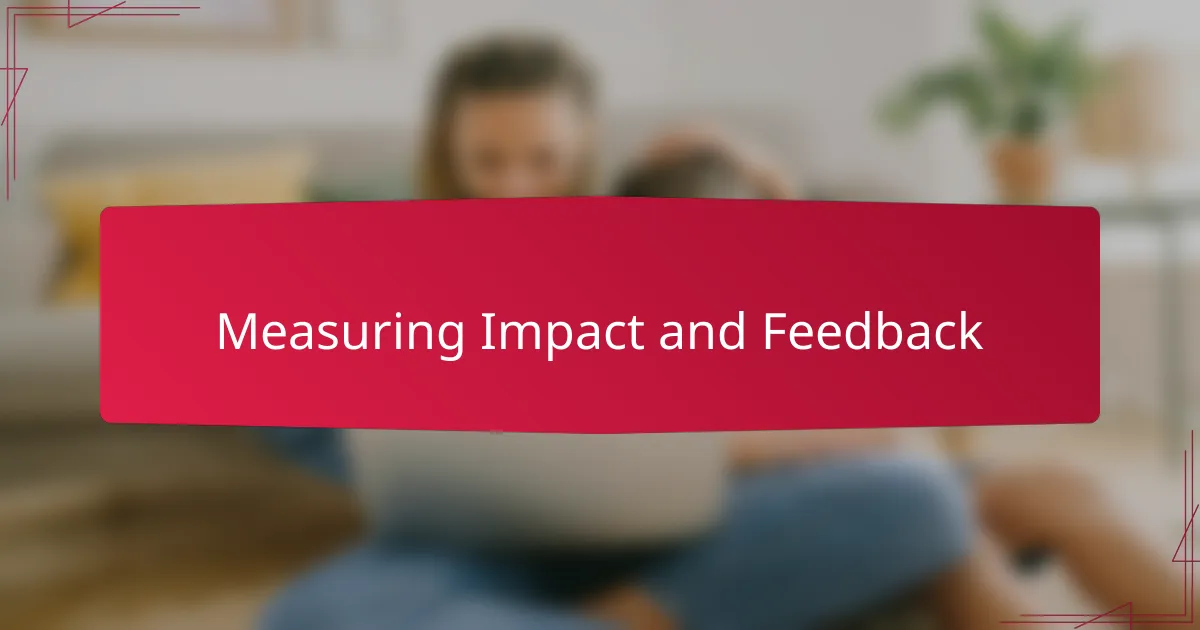
Measuring Impact and Feedback
Measuring the impact of our community engagement through LocalGiving was a revealing experience. I found that tracking donations alongside personal stories from families made the data feel more meaningful. The feedback helped me understand not just the numbers, but the real difference our efforts were making in San Diego.
| Metric | Insight |
|---|---|
| Donation Amount | Steady growth showed increasing trust and participation. |
| Number of Donors | More first-time donors each month reflected expanding community reach. |
| Personal Feedback | Stories from families highlighted emotional impact beyond funds raised. |
| Repeat Engagement | High repeat donors indicated sustained community commitment. |

Tips for Sustained Community Support
Sustaining community support feels like tending a garden—you have to nurture relationships continuously. I learned that regularly thanking donors, not just once but consistently, keeps the connection alive and shows that their support truly matters. Have you ever noticed how a simple “thank you” can inspire someone to give again? That’s the kind of genuine appreciation that builds long-term loyalty.
Another tip I found invaluable was keeping the community involved beyond just asking for funds. Sharing updates, celebrating small wins, and inviting input made people feel part of an ongoing story, not just one-time contributors. When neighbors see progress and hear how their efforts change lives, their enthusiasm naturally stays strong.
Finally, mixing up engagement methods keeps things fresh and avoids donor fatigue. I experimented with everything from casual meetups to online shout-outs on LocalGiving, and it made a big difference. Have you tried switching your approach when support starts to lag? In my experience, variety sparks renewed energy and makes people eager to stay involved.


